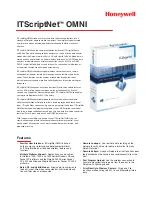
High-availability clusters provide continuous availability of services by eliminating single points
of failure and by failing over services from one cluster node to another in case a node becomes
inoperative. Typically, services in a high-availability cluster read and write data (via read-write
mounted file systems). Therefore, a high-availability cluster must maintain data integrity as one
cluster node takes over control of a service from another cluster node. Node failures in a
high-availability cluster are not visible from clients outside the cluster. (High-availability clusters
are sometimes referred to as failover clusters.) Red Hat Cluster Suite provides high-availability
clustering through its High-availability Service Management component.
Load-balancing clusters dispatch network service requests to multiple cluster nodes to balance
the request load among the cluster nodes. Load balancing provides cost-effective scalability
because you can match the number of nodes according to load requirements. If a node in a
load-balancing cluster becomes inoperative, the load-balancing software detects the failure and
redirects requests to other cluster nodes. Node failures in a load-balancing cluster are not
visible from clients outside the cluster. Red Hat Cluster Suite provides load-balancing through
LVS (Linux Virtual Server).
High-performance clusters use cluster nodes to perform concurrent calculations. A
high-performance cluster allows applications to work in parallel, therefore enhancing the
performance of the applications. (High performance clusters are also referred to as
computational clusters or grid computing.)
Note
The cluster types summarized in the preceding text reflect basic configurations;
your needs might require a combination of the clusters described.
2. Red Hat Cluster Suite Introduction
Red Hat Cluster Suite (RHCS) is an integrated set of software components that can be
deployed in a variety of configurations to suit your needs for performance, high-availability, load
balancing, scalability, file sharing, and economy.
RHCS consists of the following major components (refer to
Figure 1.1, “Red Hat Cluster Suite
Introduction”
):
• Cluster infrastructure — Provides fundamental functions for nodes to work together as a
cluster: configuration-file management, membership management, lock management, and
fencing.
• High-availability Service Management — Provides failover of services from one cluster node
to another in case a node becomes inoperative.
• Cluster administration tools — Configuration and management tools for setting up,
configuring, and managing a Red Hat cluster. The tools are for use with the Cluster
Chapter 1. Red Hat Cluster Suite Overview
2
Summary of Contents for CLUSTER SUITE FOR ENTERPRISE LINUX 5.2
Page 4: ...Red Hat Cluster Suite Overview ...
Page 6: ...vi ...
Page 10: ...x ...
Page 18: ...Figure 1 3 Power Fencing Example Chapter 1 Red Hat Cluster Suite Overview 8 ...
Page 33: ...Figure 1 16 Conga LVM Graphical User Interface Cluster Logical Volume Manager 23 ...
Page 66: ...56 ...
Page 76: ...66 ...
Page 78: ...68 ...













































